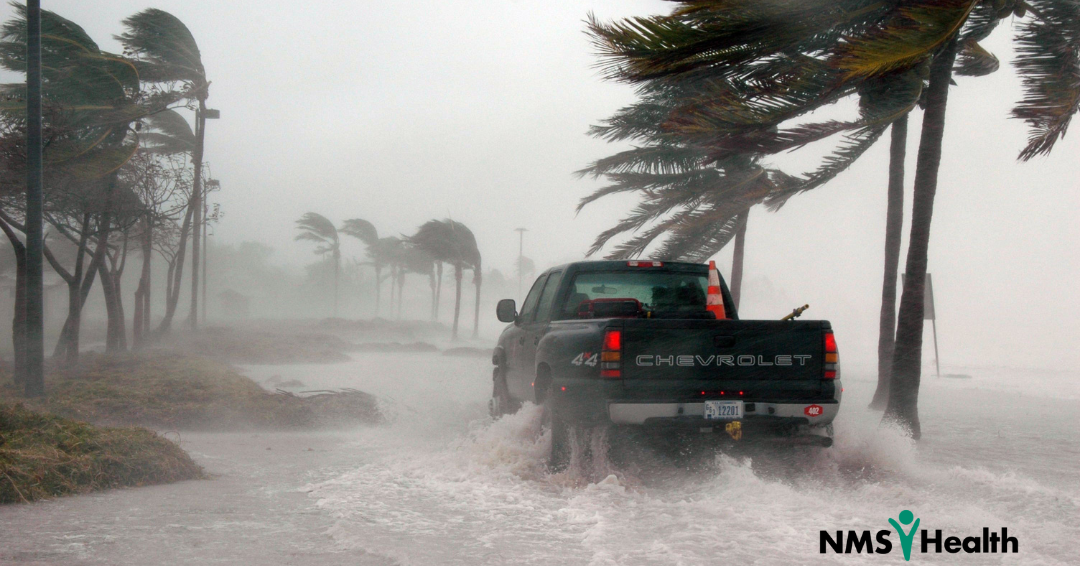The Atlantic hurricane season runs from June 1st through November 30th, with the greatest amount of activity from mid-August to mid- October. The National Oceanic and Atmospheric Administration (NOAA)’s outlook for the 2022 season, predicts a 65% chance of an above-normal activity season. With storm surges, high winds, large waves, and flooding, hurricanes can be extremely dangerous for anyone in their paths. According to the Congressional Budget Office, they estimate that damages from hurricane activity costs U.S. businesses $9 billion every year.
Here are five steps to keep your workers safe:
1. Create a Plan
Having a preset plan in place can help minimize confusion and chaos during a hurricane. A workplace weather safety plan should include information about shelter locations, evacuation routes, policies to establish chain of command and to account for every worker, and procedures to deal with potential hazardous material. All planning materials and trainings should be provided in languages used by workers, and should be provided in multiple languages if necessary
2. Provide training and equipment
In order to respond to weather threats, and response and recovery efforts safely, employees need to have right training and equipment. For work in most flooded areas, workers will need items such as hard hats, goggles or safety glasses, heavy work gloves, and foot protection. Hearing protection is needed in situations where excessive noise from equipment could pose a risk of hearing damage. All PPE should be provided in a range of sizes to ensure each person has an appropriate fit.
3. Have a kit
Emergency supplies should be plentiful and readily available. While it is a good idea for workers to have their own emergency kits, you cannot rely on them having everything they need, or anything at all. Items such as battery-powered or hand crank radios, flashlights, first aid kits, and extra batteries will all be useful during an emergency.
4. Know the hazards
Conditions can change quickly during and after a hurricane. There are often fallen trees, downed wires, debris, and flooding. If your team is operating a portable generator, they should be made aware of the potential for shocks and electrocutions as well as carbon-monoxide poisoning.
5. Be aware
It is important to follow regional weather forecasts as storms can change direction or increase intensity with little to no warning. Additionally, keeping up with traffic conditions along evacuation routes will prevent workers from being stuck on the road.
When there’s a storm forecast
If your regional weather service is forecasting a storm, it’s the time to put your plan in action.
As soon as a watch or warning is issued, preparation can begin by:
- Activating storm shutters. If your location doesn’t have them, plywood can be attached to the window frames to reduce the chance of broken glass.
- Making sure safety kits are completely stocked and readily available. Inform workers of their locations should they be needed.
- Checking smoke and carbon monoxide detectors in the building and installing new batteries if needed.
- Inspecting all company vehicles to make sure they’re in good, working condition, especially if they’ll be used in evacuation or responder efforts. Gas and other fluid levels should be full.
- Reviewing potential shelter locations, and monitoring traffic and evacuation routes for closures.
- Establishing a chain of command for emergency functions, and who will be responsible for performing them.
After the storm
The hazards don’t end when the hurricane passes. In the aftermath of a storm, thousands of workers and volunteers respond to help in affected areas and they can encounter a wide range of hazards. Unfortunately, workers won’t know what they are walking into until they are in the thick of it. Floodwaters left behind in the wake of a hurricane can contain hazardous substances like germs, sewage, and chemicals.
For first responders after a hurricane, Safety specialist Cory Worden gave the National Safety Council some safety tips:
- Make sure electricity is turned off to avoid electrocution.
- Beware of stepping into a swimming pool or manhole not visible beneath the flood water while attempting to return to a flooded home to gather belongings. This could lead to drowning.
- Do not wade through flood water without protective equipment; flood water could contain enormous amounts of bacteria, oil, hazardous materials, solid waste and other contaminants that if ingested, absorbed or inhaled can cause illness or death.
- In areas with mold, mildew or other respirable hazards, facial hair will break the seal on a respirator; it's extremely important to maintain a seal to prevent inhalation of contaminants, so remove any facial hair.
- Heat and humidity can easily cause heat stress or worse, so take proper work/rest cycles and hydrate.
The Occupational Safety and Health Act of 1970 (OSH Act) was passed to prevent workers from being killed or seriously harmed at work. Employers are responsible for the safety and health of all of their workers and for providing a safe workplace, including in times of anticipated hazards such as severe weather events.
For additional information about severe weather preparedness, visit ready.gov for resources.


